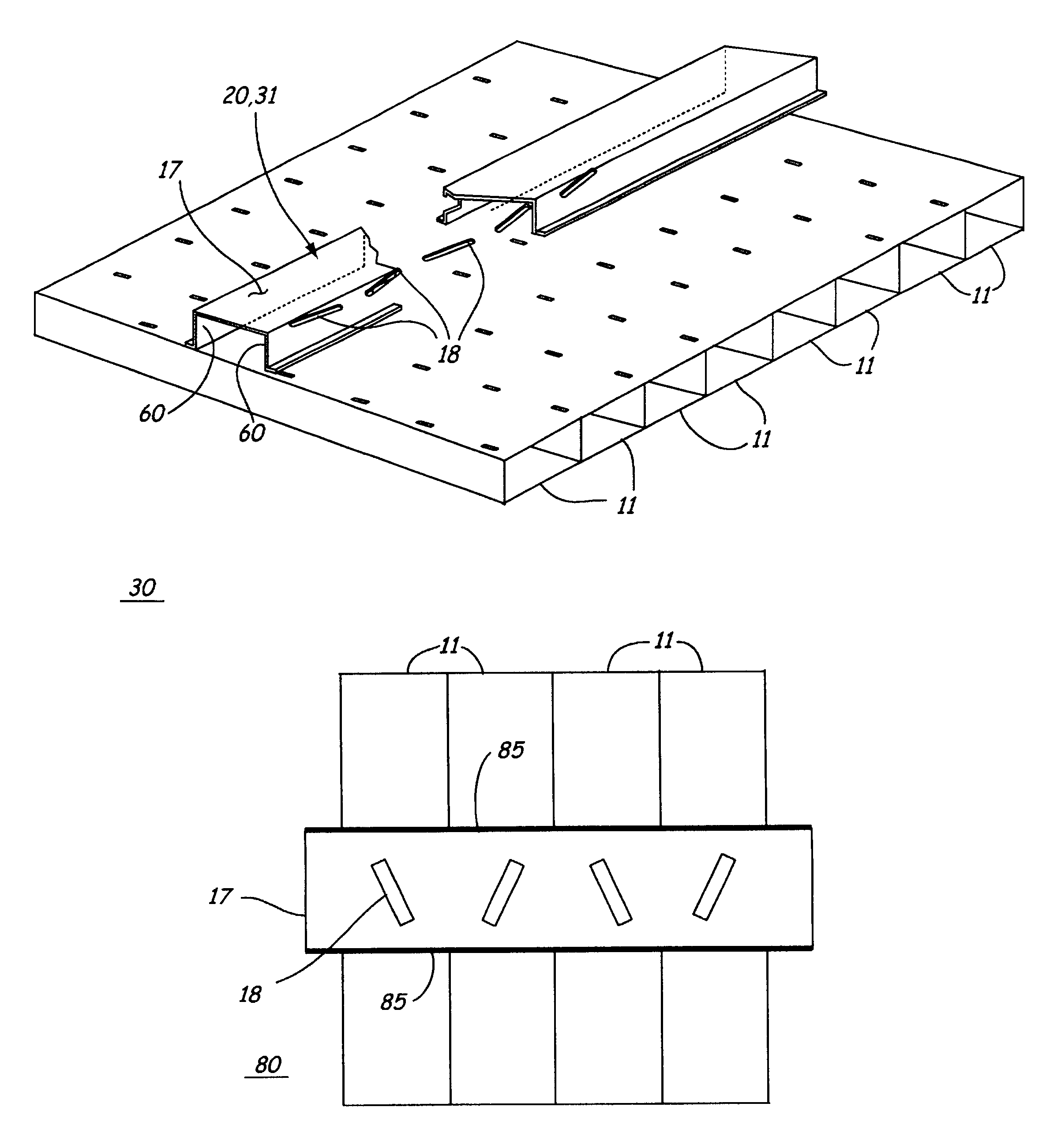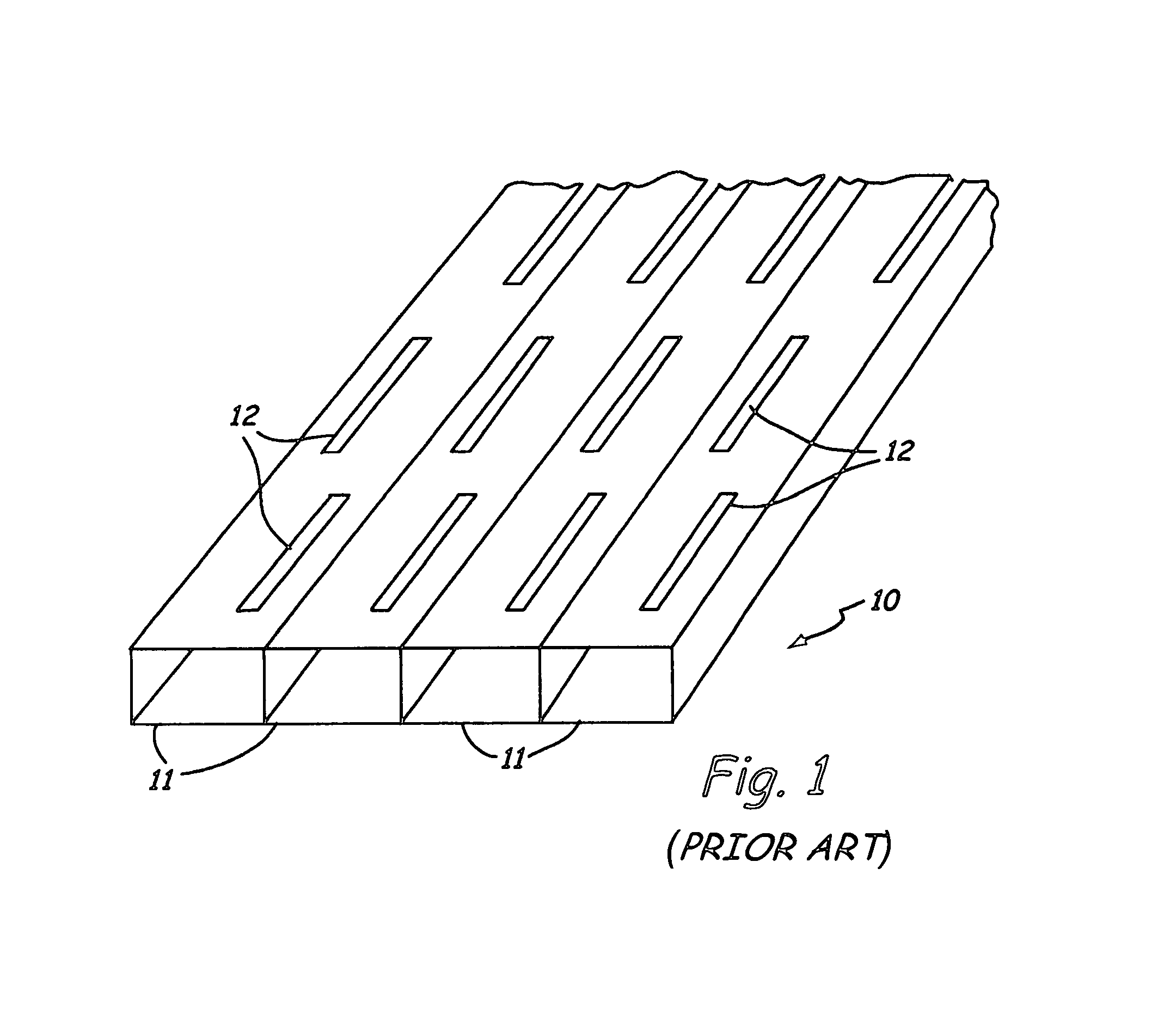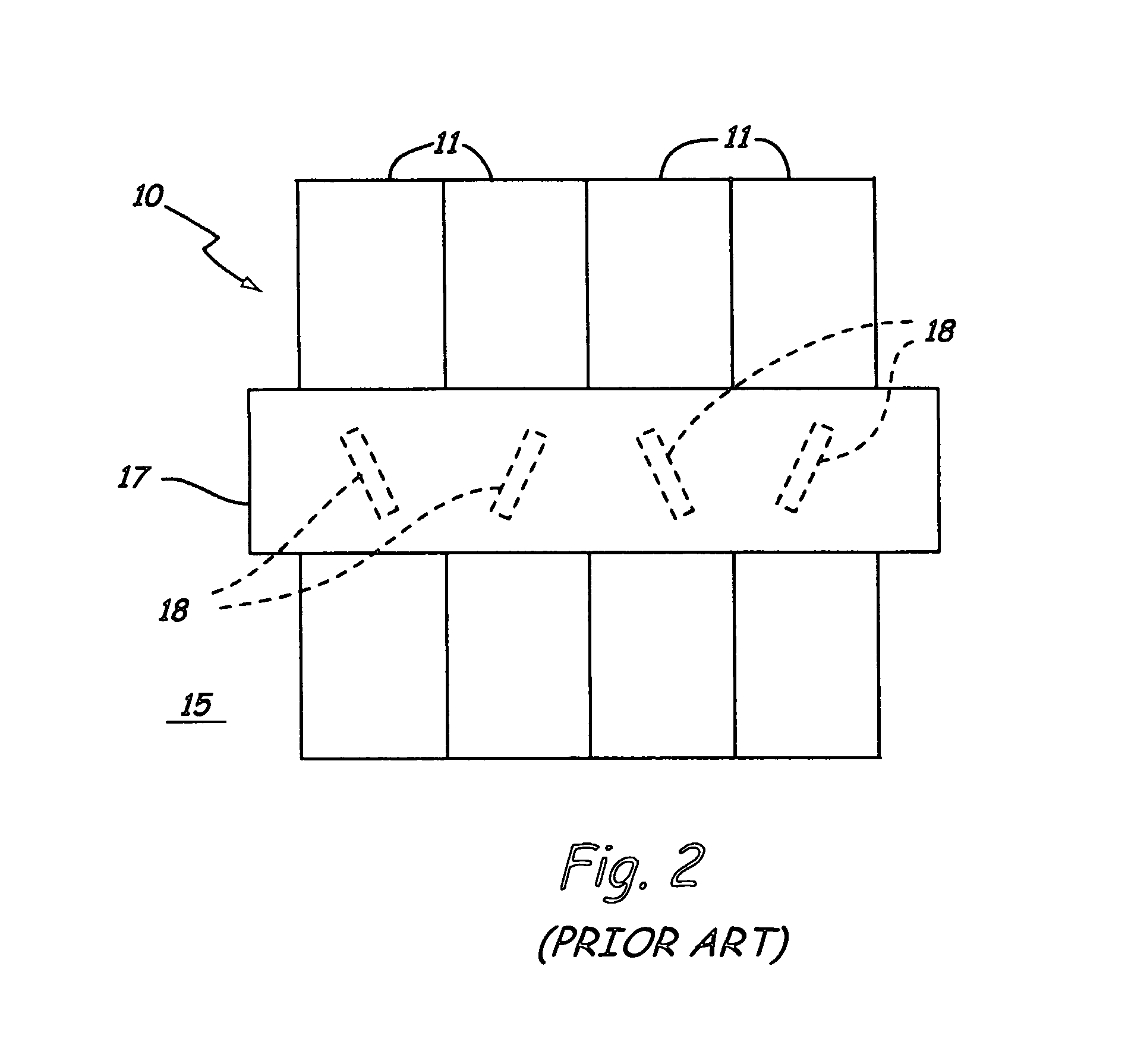One-dimensional and two-dimensional electronically scanned slotted waveguide antennas using tunable band gap surfaces
- Summary
- Abstract
- Description
- Claims
- Application Information
AI Technical Summary
Benefits of technology
Problems solved by technology
Method used
Image
Examples
Embodiment Construction
[0035]The invention described herein utilizes electromagnetic crystal (EMXT) lined waveguide sidewalls to achieve phase shifting required for electronic scanning of one-dimensional and two-dimensional slotted waveguide antennas.
[0036]EMXT devices are also known as tunable photonic band gap (PBG) and tunable electromagnetic band gap (EBG) substrates in the art. The Rockwell Scientific Company, Inc. (RSC) has developed waveguide phase shifting technologies that utilize tunable EBG substrates as waveguide walls. A detailed description of a waveguide section with tunable EBG phase shifter technologies is available in a paper by J. A. Higgins et al. “Characteristics of Ka Band Waveguide using Electromagnetic Crystal Sidewalls” 2002 IEEE MTT-S International Microwave Symposium, Seattle, Wash., June 2002. A typical EMXT structure 19, shown in FIG. 3, is described in the referenced paper. Other similar structures may be implemented based on design requirements. Electromagnetic band gap (EBG...
PUM
 Login to View More
Login to View More Abstract
Description
Claims
Application Information
 Login to View More
Login to View More - R&D
- Intellectual Property
- Life Sciences
- Materials
- Tech Scout
- Unparalleled Data Quality
- Higher Quality Content
- 60% Fewer Hallucinations
Browse by: Latest US Patents, China's latest patents, Technical Efficacy Thesaurus, Application Domain, Technology Topic, Popular Technical Reports.
© 2025 PatSnap. All rights reserved.Legal|Privacy policy|Modern Slavery Act Transparency Statement|Sitemap|About US| Contact US: help@patsnap.com



